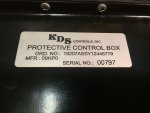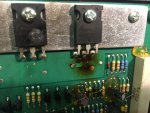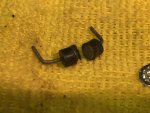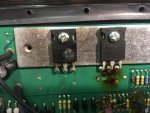I was a roadie in high school back in the 70s, brother an electronics tech/IEEE engineer (who got me the job) and I did a LOT of tinkering, built heathkit stuff, know which end of a soldering iron to use and how to circuit trace.
Thing is, when something’s as cooked as it appears to be with your photos, you have to think “cascade.”
Parts fail, often at or below rated numbers - hours, milliamps, volts, temps or because some piece of a star that went nova 7 billion years ago just knocked a few atoms out of place at a critical NP or PN juncture.
So a diode fails, or a resistor, then the next component upstream takes the heat, and the next, and so on.
So, unless you have actual published data on how to repair the board - which isn’t likely considering how “disposable” a part this is so far as TACOM is concerned (I mean, they CRUSH old HMMWVs rather than realize a profit or even marginal cash value on the collector’s market) - you’re working from schematics of dubious authenticity/currency and sometimes guessing at values.
I rebuilt a couple of old (like 40 years) guitar amp heads - Acoustic Control Corp - 270 and 370 (watt) - and even with good tracing, I wound up replacing every electrolytic cap on the boards, and a boatload of resistors I changed due to age and tolerances (like 5% instead of 10) and those things SANG. My son’s high school band used them for years then I sold them for a profit.
Absent good schematics and parts lists with published values, you’re in for replacing a LOT of parts to make the box work like new or better, and many a cold winter evening hunched over circuit boards, soldering iron in hand, scouring Mouser, eBay or Digikey’s sites for parts and so on.
Great fun if you have the talent or are up for the challenge.
Keep us posted.
Norm









